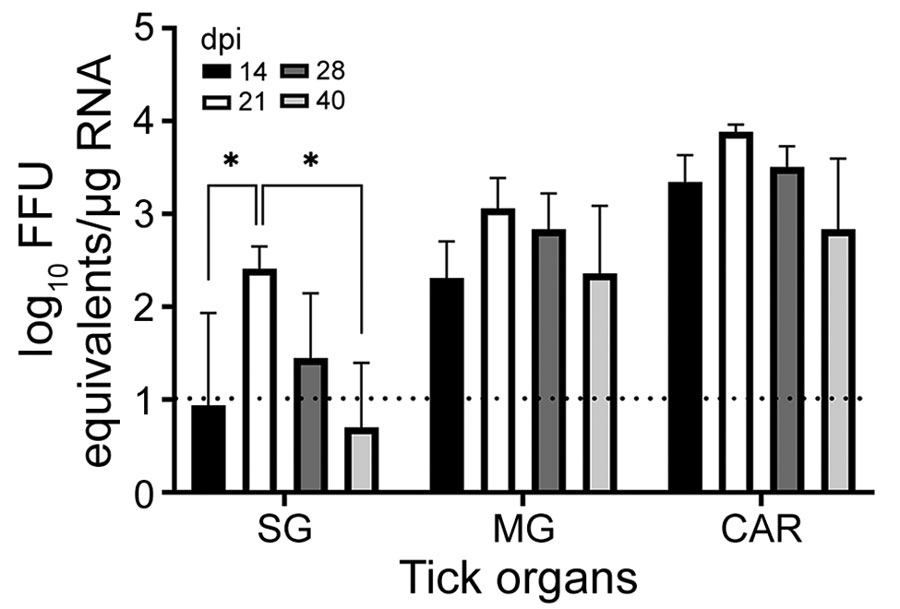Volume 28, Number 3—March 2022
Dispatch
Transovarial Transmission of Heartland Virus by Invasive Asian Longhorned Ticks under Laboratory Conditions
Figure 1

Figure 1. Detection of Heartland virus (HRTV) RNA by real-time, quantitative reverse transcription PCR reaction of HRTV-injected Haemaphysalis longicornis ticks. Ticks were dissected at 14, 21, 28, and 40 dpi. Tick organs were screened individually. Viral load data are expressed as FFU equivalents per microgram of RNA after normalization to a standard curve. Data were not normally distributed and are presented as medians with interquartile ranges. Statistical significance was determined by using Kruskal-Wallis tests followed by the Dunn test. Limit of detection was ≈10 FFU equivalents/μg RNA. *p<0.05. CAR, carcass; dpi, days postinjection; FFU, focus-forming units; MG, midgut; SG, salivary glands.
Page created: December 08, 2021
Page updated: February 21, 2022
Page reviewed: February 21, 2022
The conclusions, findings, and opinions expressed by authors contributing to this journal do not necessarily reflect the official position of the U.S. Department of Health and Human Services, the Public Health Service, the Centers for Disease Control and Prevention, or the authors' affiliated institutions. Use of trade names is for identification only and does not imply endorsement by any of the groups named above.